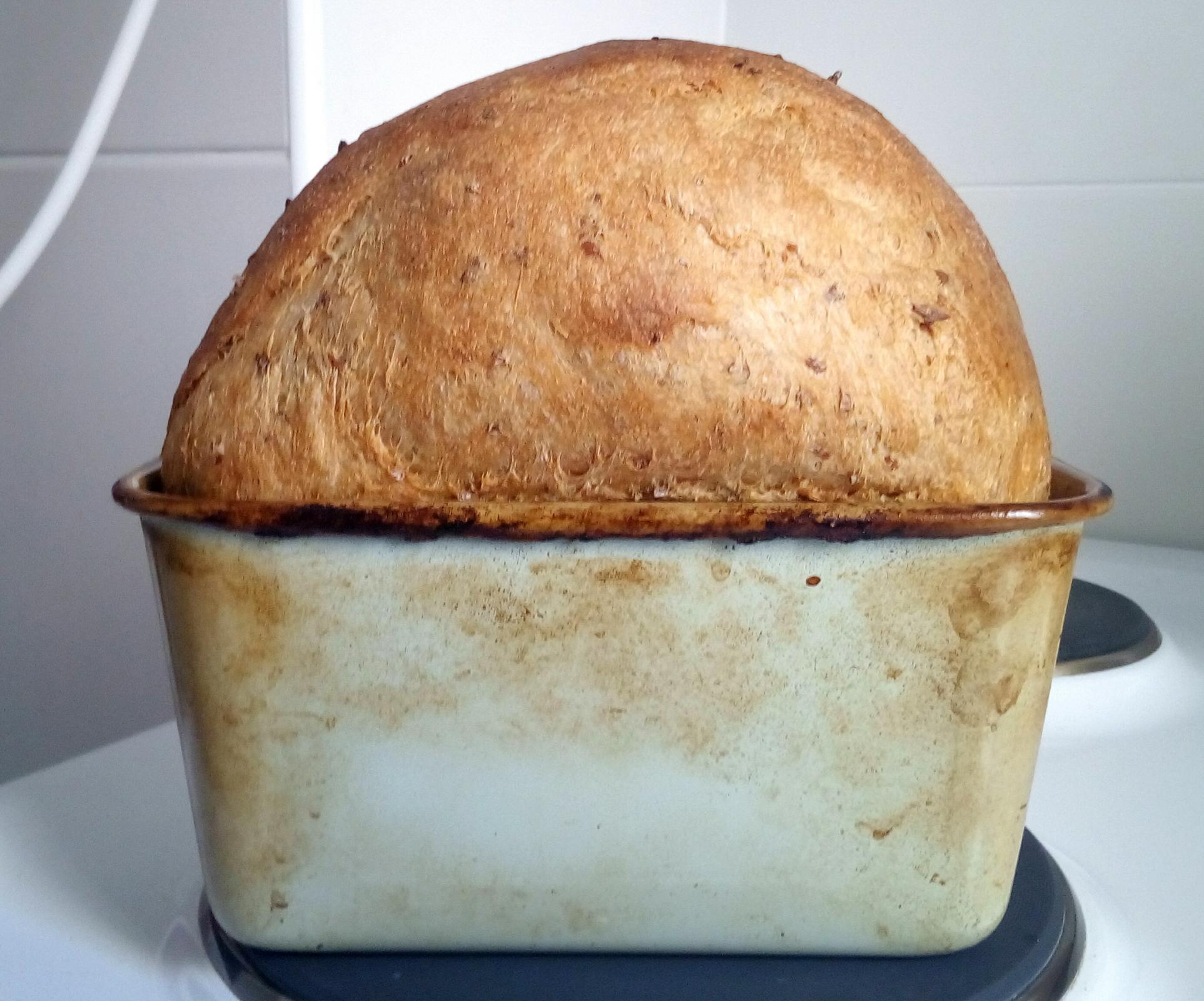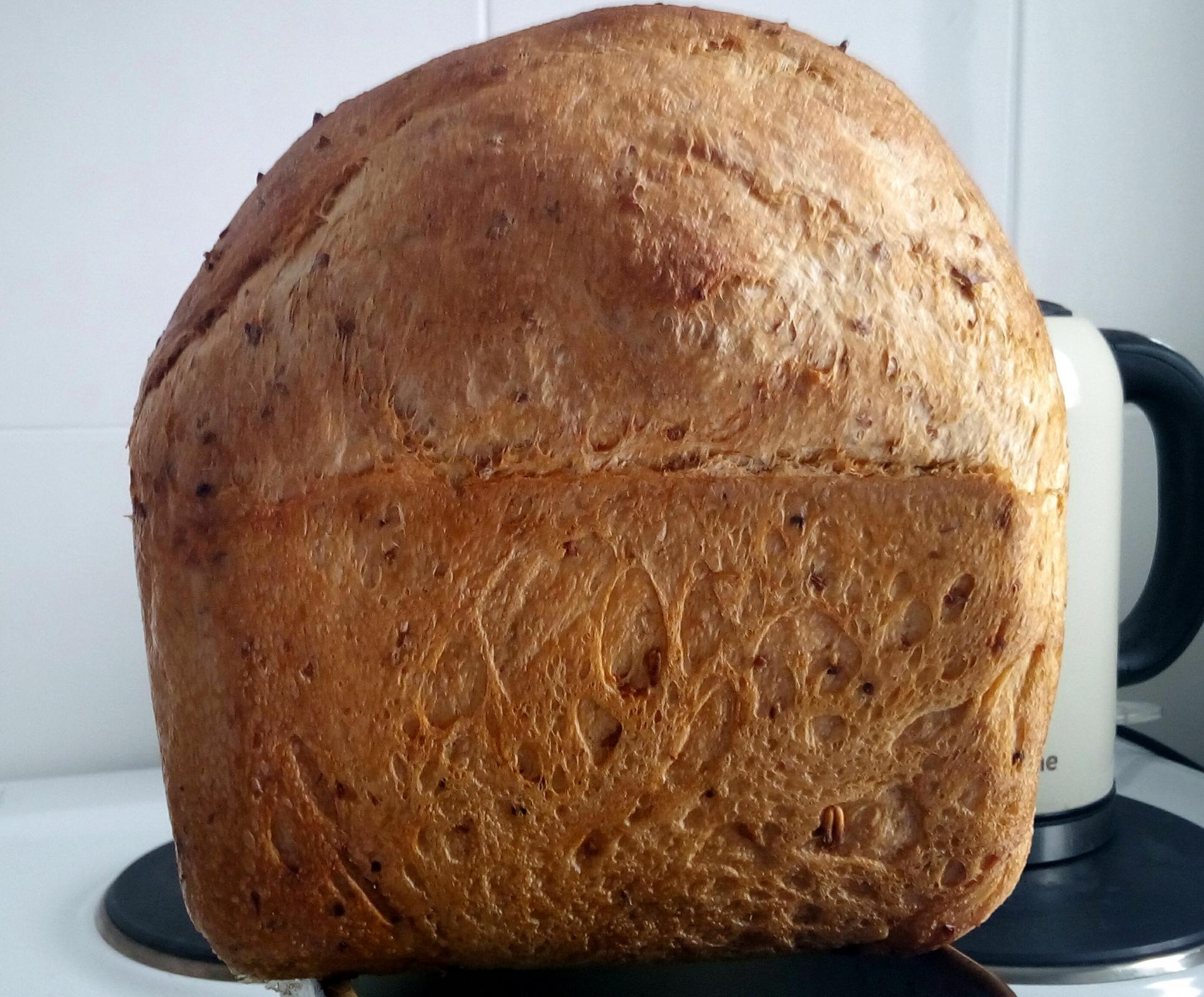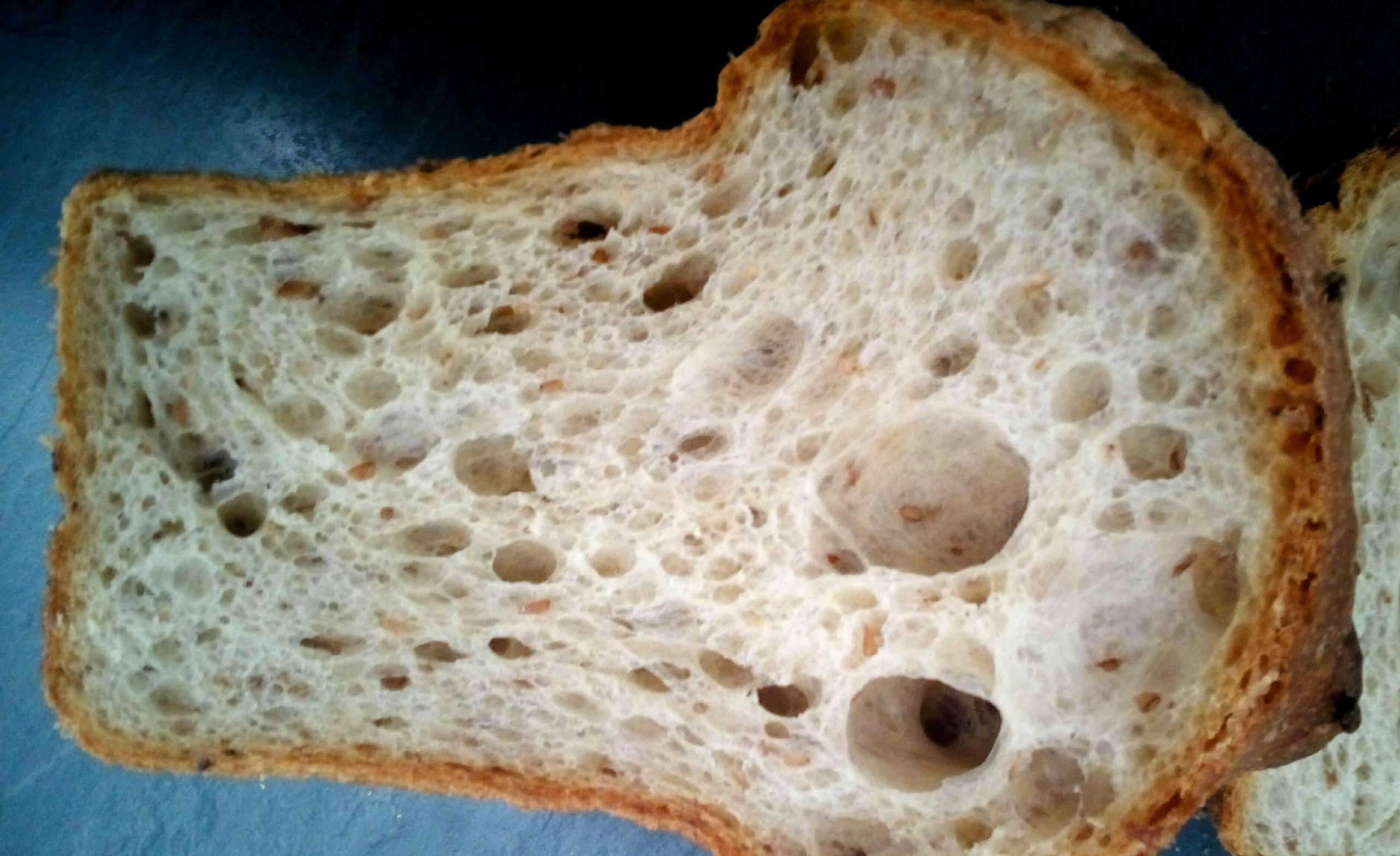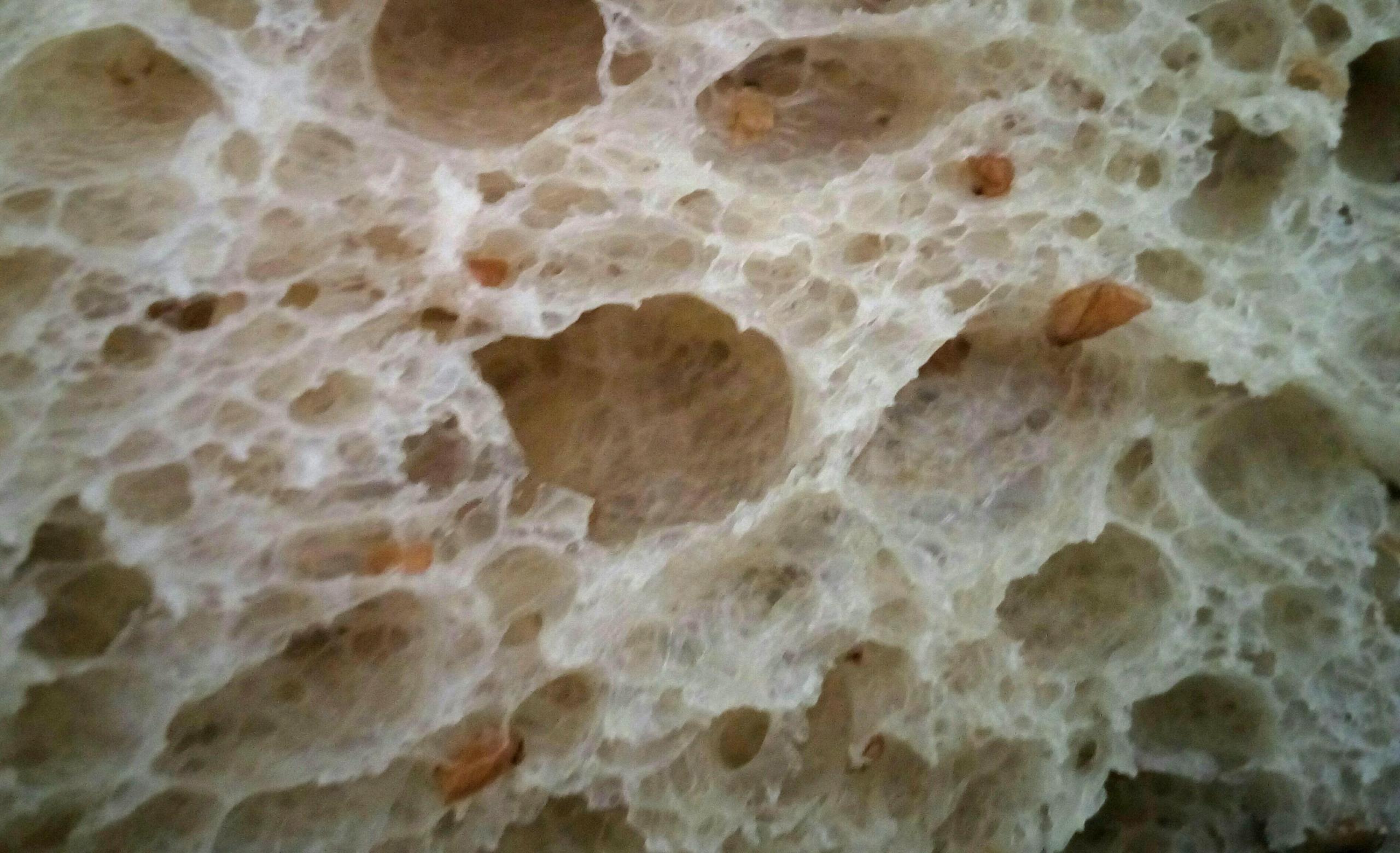Following his recommendation to bring the pH of the mash <4.5 ASAP before the souring process begins, I added ascorbic acid in the form of Vitamin C crystals to the mash water before mixing it with the malt.
Flas Specs
150 cracked rye malt
500 water
0.5 ascorbic acid
Souring Time: 44 hours; Souring Temp: 42-45C|108-113F; My Tap Water pH: 7.2; After adding AA pH: 4.3; Final Flas pH: 3.7
Adding AA has a twofold benefit. Firstly, it sets the 'souring arena' in favour of the 'good' lactos and supresses the 'baddies' right from the start. And secondly since it is transferred to the dough via 'flas' it affects dough gluten in a positive way. This is true for quick fermented breads (in my case 90' bulk+60' proof). Doing a little maths it turns out that the AA dosage used in the 'flas' results in the optimum dosage for the bread as well. I.e., baker's 0.03% (0.5x60x100/500/200=0.03). Of course one could use lactic acid or any other in place of ascorbic. But I chose ascorbic for the twofold reason mentioned before.
Bread Formula
200 flour
90 water
60 flas
1.6 instant dry yeast
4 salt
+
30 cracked spelt malt (soaked for ~24 hours, often refreshing the water and strained just before use)
Timeline
0000 Mix all ingredients together using stand mixer for 4-6 min (start of bulk - DDT 28C|82F)
0030 Laminate
0100 Roll&Fold (no excessive streching required) in basin where dough rests
0130 Shape and place in 1Lt Pan (start of proof - Brod&Taylor setting 35C|95F no humidity disk as in bulk)
0230 Bake (3 min at 250C|482F for oven-spring, then covered at 200C|392F for 57 min)





Hey, you never mentioned the bad smell of brewing FLAS before :) so we had to learn it the hard way :). That bad smell was really awful just like the SD starter version, probably from the same gas producing bacteria.
This is getting better and better and soon I think we may not be able to keep up with you anymore :). Please keep posting it and we will keep reading it. Thanks.
Ok Ming, point taken :)))))
I was always confused about that !!! :)))
Thanks for doing this experiment. I was thinking that starting acidic would boost the right players.
I'm going to try using some of my FLAS to start the next batch.
I have a couple of questions if you don't mind me asking. How did you come up with that 0.3 ratio of malt per water? Also, according to the article you linked above, boiling was mentioned, what does it mean to boil the sour mash? Thanks.
He is boiling to kill it before proceeding with beer making (I think). He wanted only the sour flavor.
On the malt ratio, I'm using 0.1 (50g of malt to 500g water) as in the original article and it is working fine.
You mean to literally cook the sour mash at 212-degree F? Wouldn't this temp kill the bacteria? Perhaps the bacteria are not needed for beer making, just their acids?
That is my guess. In this sour beer they only want the acids.
Actually, that had me thinking about something else I might try to remove the bad smell. Could FLAS be boiled to remove all odors so only the acids are left in the solution to start a new mash or even use it to make bread?
It is not 0.3 and it does not refer to the malt. It is 0.03% and it refers to the ammount of ascorbic acid I hope to pass to the dough through the use of the recipe 'flas'. Theoretically that means 0.06g of AA in 200g of recipe flour (baker's %). Of course in practice some of the AA will be denatured during souring but keeping out oxygen and souring times short this effect is mitigated somehow. The positive effect of AA is clearly seen on the final loaf, so some of this 0.03% must have survived.
Do not bother with the boiling. This is part of the poccedure (killing the lactos after souring) brewers use to make beer, nothing to do with bread.
I was not talking about the AA ratio, I was referring to the malt per water ratio.
In this case (as you can see in the "Flas Specs' of my post) I use 150g of malt in 500g water. This is 30% of malt to water (500g water x 30% = 150g malt).
30% and 0.03% might look similar numbers at first glance but they are 3 orders of magnitute apart and they refer to different things as well.
30% is the malt in water ratio for the 'flas'.
0.03% is the recipe percentage in baker's terms of AA in the bread dough.
Why did you use 30% malt for this FLAS?
Ming, my whole interest for this technique started by reading 'RusBrot' blog. It appears in Russian language but it has a translation button at the top right of the page. There, in his article named 'extracting lactic acid from malt' he uses a jar filled 1/3 with malt and water to the top. So taking this as a start and then empirically I ended up using 30%. This percentage seems to serve me well and have used it through out all my posts.
That is the info I was looking for, thanks for clarifying it. I read somewhere that a typical wort also uses 1/3 malt, so I think you are right on the money with that ratio.
By the way, are you in Germany? You don't have to answer that. Regardless, you will always be the person that I associate with using FLAS. Thanks.
No I'm not in Germany. I'm in FLASland !!! :)))))
Piling on to Ming's request, I'd love to learn your first name. "Bread and Circuses" is a really cool id but it helps me to think of people by name.
Again, you don't have to answer that and THANK YOU for introducing me to FLAS.
Well, thank you both for your interest. It's very humane.
So to make a short story long, my first name is 'Savvas'. I am from Athens-Greece and I am a Physisist. I took my first degree BSc in Physics in the Universtity of Athens. After that I took a PhD degree in Medical Physics at the University of London ("Guy's Hospital Medical School"). I lived in London for 10 years, working as a post-doc also at Guy's Hospital (London Bridge).
The interesting thing about all these is not me and myself, but the fact that I was previliged enough to have as my PhD supervisor Professor Ray Gosling. In 1954 he was a PhD student himself under Rosalind Franklin. Then, at the basements of King's College London, both of them set the foundations for the discovery of DNA. I' m really grateful to him.
Since then I've written thousands of lines code spent years debugging, when I thought to myself "hey, it's about time to make some bread". And this is what I'm striving to do........ :)))
Cheers.
Fred Brooks, founder of our department and my mentor, was a pioneer in the application of computers to working out the structure of proteins from crystallography. Many biochemists came to our labs to advance their research while Fred and his students tried out visualization concepts.
It is a pleasure to meet you and to discover this link.
gb
Great stuff gb, great stuff. The pleasure is all mine.
Hello Savvas, looks like you have a very impressive academic background, and I think you and Gary might have a common interest for coding. Thanks for sharing your background with us.
Hi paneMC,
I love your write-ups on flas and your AA inclusion was very interesting!
Recently, I steamed some tangerine peels (15 min) and then pureed it with some water (no measurements).
I took about 1.25 c of puree and with a couple of spoons of old flas, 50 gr rye malt crushed, water (to approximate the rye:water of 3:10) and fermented it as a regular batch of flas (24h at 43C).
After straining out the flas liquid, I had leftover pulp and rye grains. 35gr of this strained material was mixed with 350 gr whole white wheat and 1/2 tsp diy to make a dough. Dough rose beautifully and had such a nice bounce and feel when shaping pita rounds.
Here is a picture. (Dough had 2% salt, a bit of coconut milk, a spoon of yogurt and green onions.) See the flecks of green onions and orange - they go together very well!! ; wonderful chew and soft ! Now I regularly use the strained coarse material as I would clas.